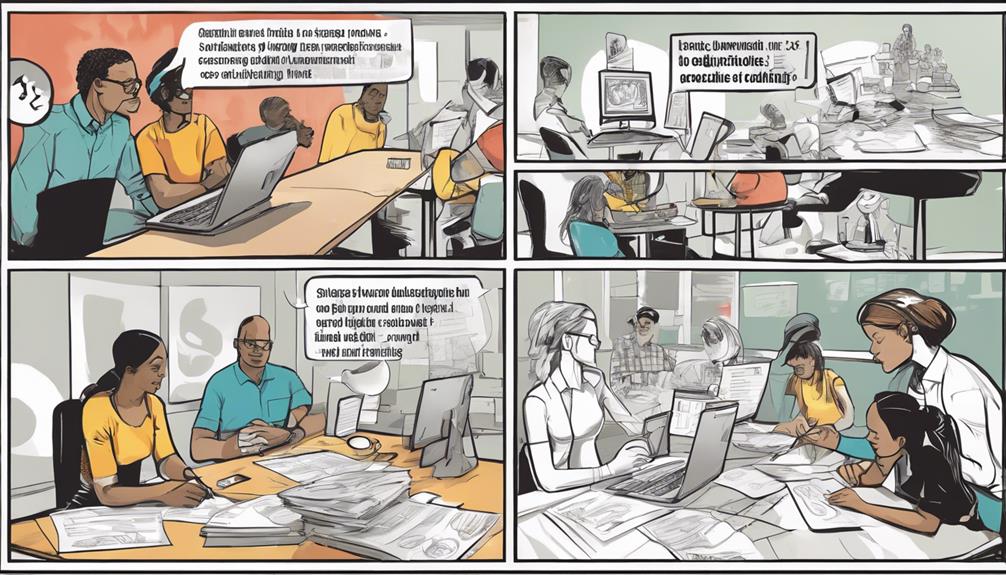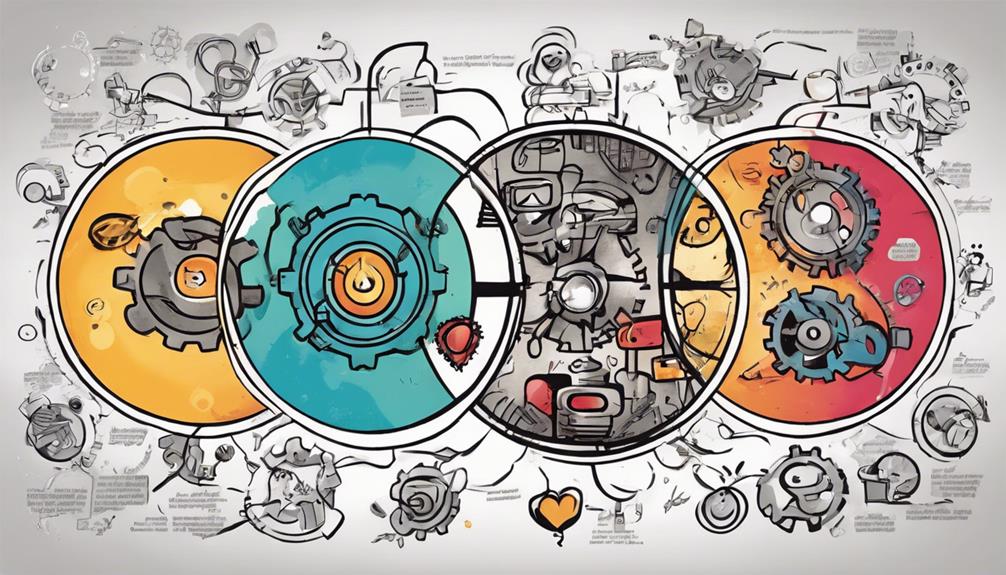If you're curious about the Double Diamond Design Thinking Framework, it's a structured process that guides problem-solving. From its origin to its influence in diverse fields, the framework has proven effective in driving innovation. Each step – Discover, Define, Develop, Deliver – plays a critical role in finding solutions. The framework's evolution, integration with A.I., and emphasis on creativity emphasize its adaptability. Understanding its significance can unearth a world of innovative possibilities.
Key Takeaways
- The Double Diamond framework consists of 4 key phases: Discover, Define, Develop, Deliver.
- It emphasizes divergent and convergent thinking to explore and refine solutions.
- Each phase focuses on a specific aspect of problem-solving, from research to implementation.
- The framework helps teams navigate complex challenges systematically.
- It fosters creativity, innovation, and user-centric design throughout the design process.
Evolution of Double Diamond Framework
The evolution of the Double Diamond framework has been shaped by contributions from various designers and the emergence of new frameworks. Designers like Dan Nessler and Cat Drew have played significant roles in advancing the framework's evolution.
Additionally, new frameworks such as the Systemic Design Framework and A.I.-Augmented Double Diamond have emerged as evolutions of the original concept, further enhancing its capabilities.
Speculative design approaches have also influenced the evolution of the Double Diamond framework, making it more effective and adaptable to different industries and challenges. Professionals like Jeff Humble have actively contributed to teaching design strategy and innovation, thereby propelling the framework's evolution forward.
LogRocket: UX Insights and Sharing

LogRocket, with its user experience analytics tool, offers valuable insights into user behavior for over 200k developers and product managers. Through its Galileo AI, LogRocket dives into user sessions, providing in-depth UX insights. By identifying user struggles and behavior patterns, LogRocket aids in refining digital experiences. It combines qualitative and quantitative data, empowering the creation of user-centric designs and solutions.
Moreover, LogRocket doesn't stop at insights; it facilitates sharing options for content across various platforms. This sharing capability fosters collaboration among team members and stakeholders, enabling seamless feedback loops. By leveraging LogRocket's sharing features, teams can efficiently communicate design iterations, gather input, and iterate swiftly for enhanced user experiences. This collaborative aspect aligns with the iterative nature of the design process, promoting agility and continual improvement.
With LogRocket, not only can you gain valuable UX insights, but you can also streamline the sharing of findings for optimized design outcomes.
Importance of Problem-Solving
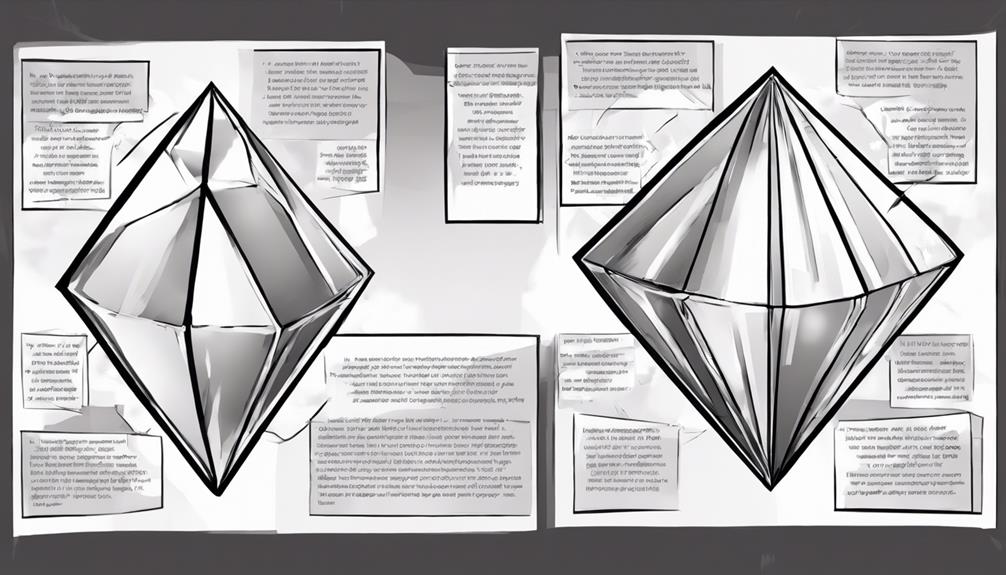
You must understand the strategies for grasping the core problem, validate solutions effectively, and embrace iterative improvement methods. These are essential components of successful problem-solving within the Double Diamond framework.
Problem Understanding Strategies
Exploring effective problem understanding strategies is vital for successful problem-solving within the Double Diamond design thinking framework.
In the Discover phase, delving deep into the problem space through methods like root cause analysis and field research is necessary. These approaches enable a thorough understanding of the problem's nuances and complexities.
Moving into the Define phase, the insights gathered aid in reframing the initial problem statement to make sure it aligns with the identified user needs and pain points. Crafting clear problem statements is crucial in guiding the design process towards meaningful solutions.
Additionally, developing detailed user personas based on research findings enhances problem understanding by providing a human-centered perspective.
Solution Validation Techniques
In ensuring the effectiveness of your design solutions, understanding the significance of solution validation techniques within the Double Diamond design thinking framework is vital.
To validate your solutions effectively, consider the following:
- Prototyping: Building prototypes allows you to visualize and test your ideas in a tangible form. Prototypes help in gathering early feedback, identifying potential issues, and refining solutions before investing heavily in development.
- User Testing: Conducting user testing involves observing real users interacting with your prototypes or solutions. This technique provides valuable insights into user behavior, preferences, and pain points, helping you tailor your designs to better meet user needs.
- Feedback Collection: Actively seeking feedback from users, stakeholders, and other relevant parties throughout the design process is essential. Collecting feedback helps in identifying areas for improvement, validating design decisions, and ensuring that the final solution aligns with user expectations.
Iterative Improvement Approaches
Iterative enhancement approaches play a crucial role in the Double Diamond design thinking framework by emphasizing problem-solving to refine solutions through iterative cycles of ideation, prototyping, and testing.
This continuous refinement process guarantees that design solutions are continuously adjusted and optimized based on user feedback and testing outcomes. Problem-solving iterations within the framework lead to innovative solutions that directly address the core issues identified during the discovery and definition phases.
4 Ds of Double Diamond
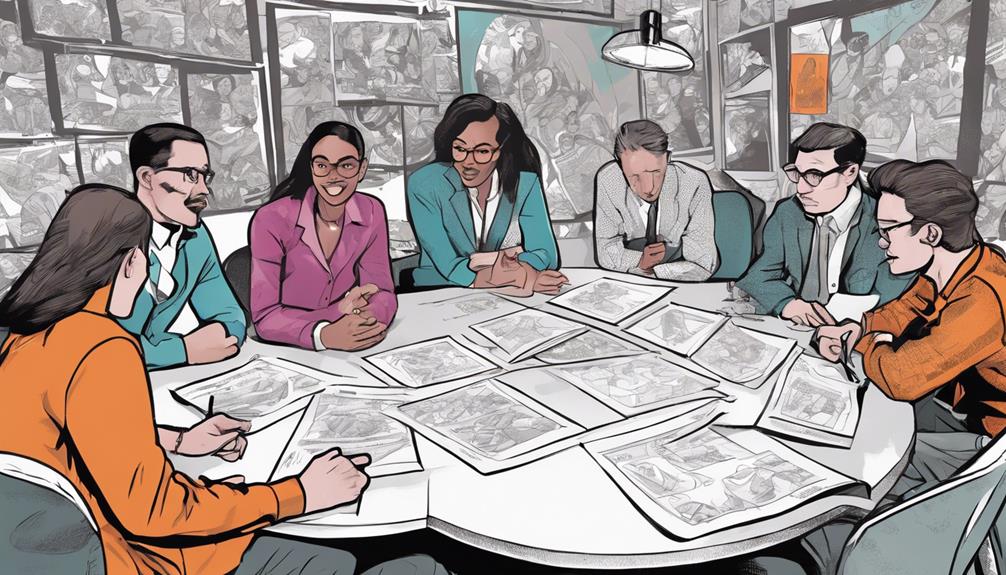
Let's zero in on the key points of the Double Diamond Design Process – the four phases and the problem-solving approach embedded within each stage.
Understanding how each phase contributes to the overall problem-solving journey can enhance your design thinking process.
Design Process Phases
The Design Process Phases in the Double Diamond framework involve a systematic approach to problem-solving and innovation. Here are three essential aspects to keep in mind when moving through these phases:
- Discover Phase: This initial stage is vital for the design team to immerse themselves in the project's context, identifying challenges, and gaining a deep understanding of the problem at hand. It sets the foundation for the rest of the design process.
- Define Phase: In this stage, the design team synthesizes the information gathered during the Discover phase, analyzing research insights to specify project requirements and the target audience. This phase helps in clarifying the project's goals and objectives.
- Develop Phase: Once the problem is well-defined, the design team starts generating ideas and creating solutions. This phase involves sketching, wireframing, and prototyping to explore different possibilities and refine potential solutions for the problem at hand.
Problem-Solving Approach
Moving from the Design Process Phases, the Problem-Solving Approach in the Double Diamond framework is structured around the 4 Ds: Discover, Define, Develop, and Deliver.
As problem solvers, you begin with the Discover phase, where divergent thinking is encouraged to explore and understand the problem space thoroughly. This phase sets the stage for effective solutions by gathering insights and empathizing with the users.
In the Define phase, you narrow down the scope and define clear objectives, moving from divergent to convergent thinking to focus on specific challenges.
The Develop phase then prompts you to unleash your creativity, generating design sketches and prototypes based on the insights gathered earlier.
Finally, in the Deliver phase, you refine and implement the best solution to address the identified problem effectively.
Evolved Double Diamond Concepts
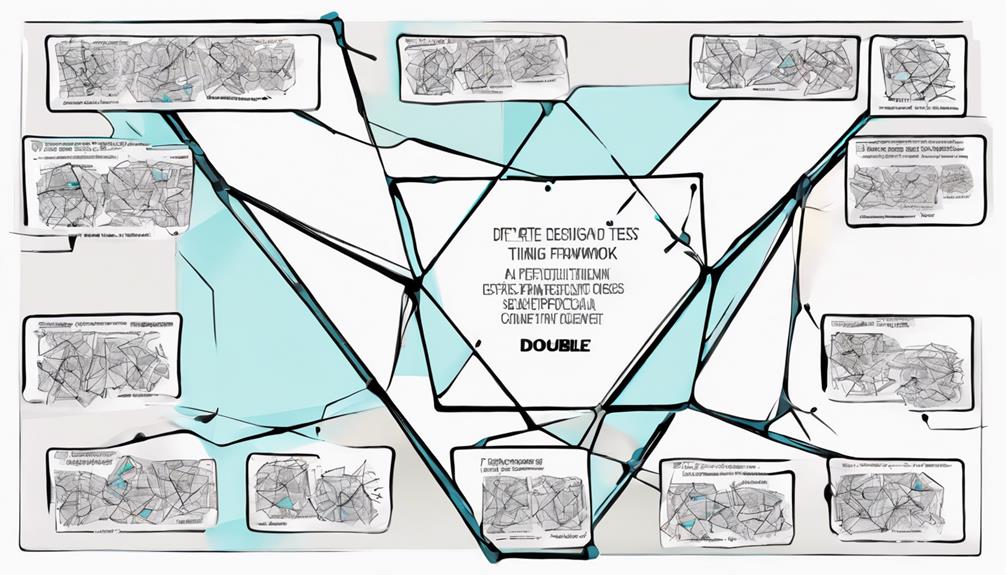
With designers like Dan Nessler and Cat Drew leading the way, the Double Diamond concept has evolved greatly. This evolution has been influenced by innovative design strategy, pushing the boundaries of traditional approaches towards a more forward-thinking mindset.
Here are three key aspects of the evolved Double Diamond concepts:
- Systemic Design Framework: The integration of systemic thinking into the Double Diamond framework has allowed for a more holistic approach to problem-solving, considering the interconnectedness of various elements within a system.
- A.I.-Augmented Double Diamond: The incorporation of artificial intelligence tools and technologies has enhanced the efficiency and effectiveness of the Double Diamond process, enabling designers to explore new possibilities and solutions rapidly.
- Speculative Design Approaches: Embracing speculative design methodologies has encouraged designers to think beyond the present constraints, fostering creativity and innovation in the ideation and prototyping stages of the Double Diamond framework.
These advancements aim to elevate the Double Diamond framework's impact, making it a more robust and adaptable tool for designers seeking to tackle complex challenges.
Impact of Art & Design Education

Art and design education plays an essential role in fostering creativity and problem-solving skills necessary for driving innovation. By integrating the design thinking model into educational curriculums, students are equipped with the tools to become innovative thinkers.
Hands-on design projects within these programs offer practical experience, allowing students to apply their creative thinking and problem-solving skills in real-world scenarios. Educational institutions widely acknowledge the significance of art and design education in nurturing a future generation of individuals capable of driving innovation.
Emphasizing creativity in these educational settings not only enhances students' abilities to solve user problems but also instills a mindset that's essential for becoming successful innovative thinkers. Through art and design education, students are encouraged to think outside the box and develop the skills needed to tackle complex challenges in today's rapidly evolving world.
Characteristics of Design Thinking

Design thinking is characterized by its emphasis on inclusive idea exploration to effectively solve user problems. This approach fosters creativity and innovation through a human-centered design process.
Here are three key characteristics that define design thinking:
- Iterative Nature: Design thinking embraces an iterative process where solutions are refined through repeated cycles of prototyping, testing, and feedback. This iterative approach allows for continuous improvement based on user input, guaranteeing that the final product meets user needs effectively.
- Creativity and Innovation: Design thinking integrates creative problem-solving techniques to generate innovative solutions. By encouraging out-of-the-box thinking and experimentation, design thinking enables teams to explore unconventional ideas and approaches to address complex challenges.
- User-Centric Design Process: User feedback plays a pivotal role in the design thinking process. By prioritizing empathy and understanding the user's perspective, design thinking ensures that solutions are tailored to meet user needs and preferences, ultimately leading to more successful outcomes.
Design Process Step-by-Step
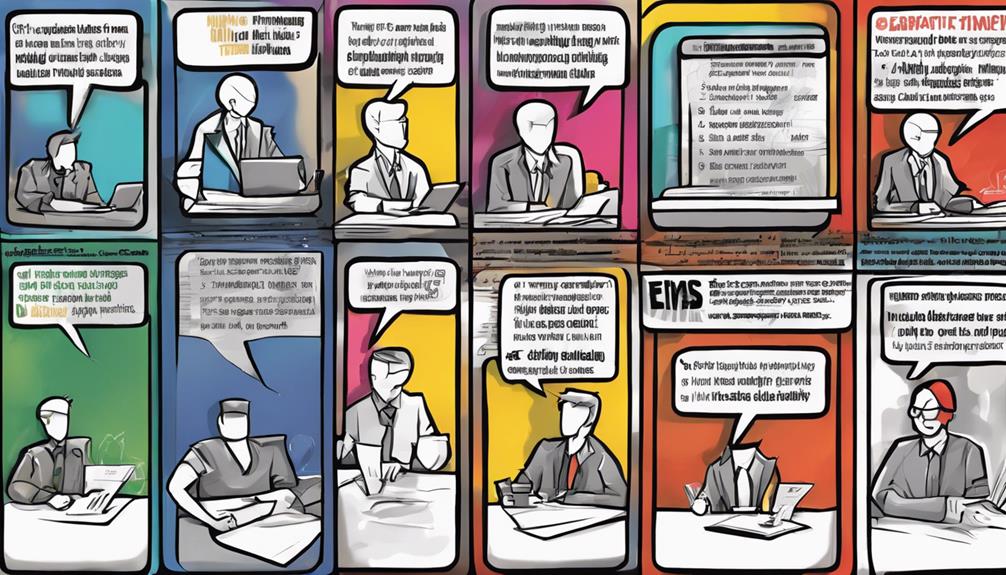
The step-by-step design process in the Double Diamond Design Thinking Framework involves four key phases that guide problem-solving and solution generation.
The first phase, Discover, is all about exploring and comprehending the problem space through thorough research and analysis. This initial step sets the foundation for understanding the challenges at hand.
Following Discover is the Define phase, where the problem statement is refined based on the insights and data gathered earlier. This phase helps in clearly defining the problem to make sure focused ideation in the subsequent stages.
Moving on, the Develop phase is where innovative solutions are generated, prototyped, and tested to effectively address the defined problem.
Lastly, the Deliver phase focuses on implementing the best solution and bringing it to fruition. Each phase in the Double Diamond framework plays an essential role in progressing through the design process systematically, ultimately leading to successful problem-solving.
Frequently Asked Questions
What Are the 4 Stages of the Double Diamond Model?
The 4 stages of the Double Diamond model are Discover, Define, Develop, and Deliver. Each phase is essential in guiding you through problem understanding to solution implementation, ensuring a structured approach to design.
What Is the Double Diamond Principle?
The Double Diamond principle is a design thinking framework that guides problem exploration and solution development. It uses divergent and convergent thinking to refine solutions effectively. Widely applied in UX design, service design, and product management.
What Are the Four Parts of the Double Diamond Design Model?
To understand the Double Diamond design model, focus on its four main phases: Discover, Define, Develop, and Deliver. Each phase targets specific elements of problem-solving and design iteration, guiding you through the creative process.
What Is the 2 Diamond Method?
To understand the 2 diamond method, visualize problem and solution spaces. It aids in deepening your grasp of design challenges and honing effective solutions. Emphasizing divergent and convergent thinking, this approach leads to exploring and refining ideas efficiently.
Conclusion
So, now that you've learned about the Double Diamond design thinking framework, are you ready to dive deeper into problem-solving and creative solutions?
Keep exploring the 4 Ds, evolving concepts, and the impact of design education to uncover new possibilities and harness your innovative potential.
Stay curious, stay inspired, and keep pushing the boundaries of design thinking. The journey of creativity and problem-solving awaits!

